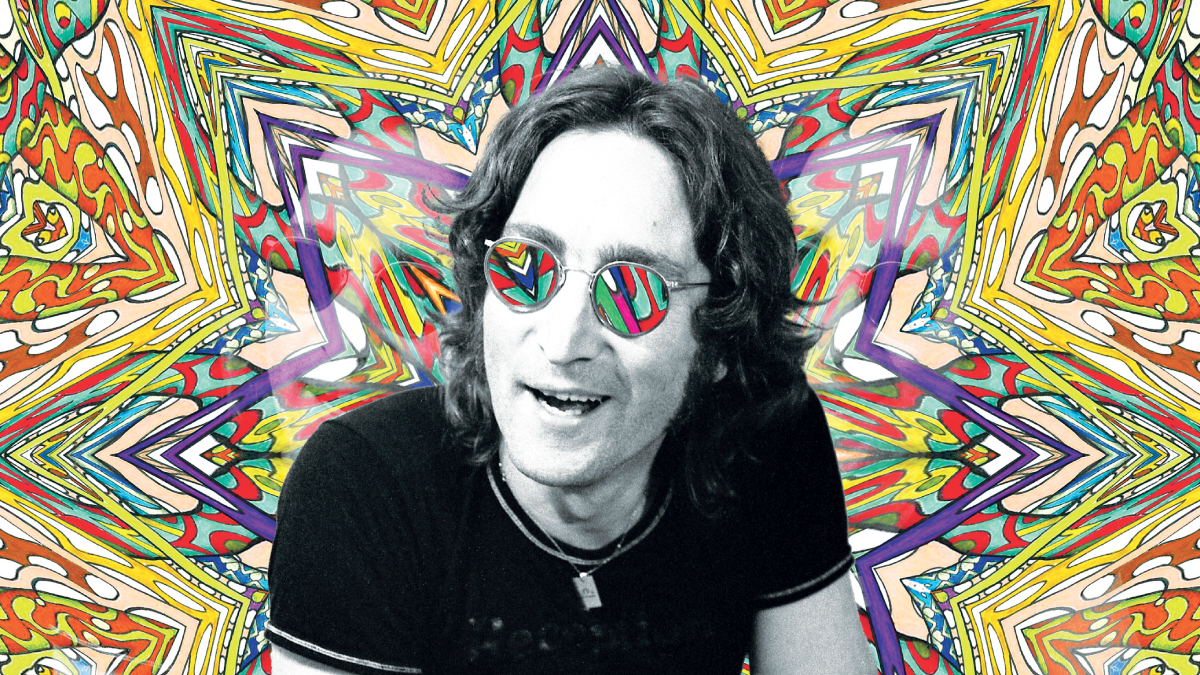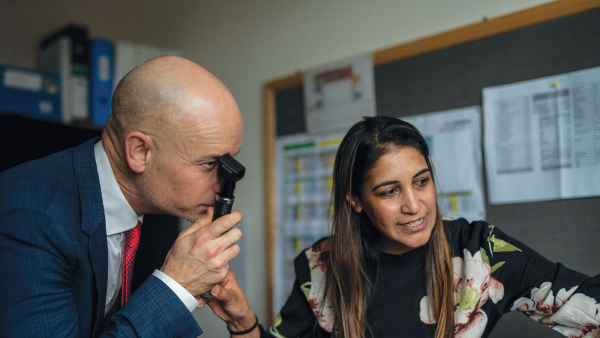Kaleidoscope Eyes: The Temperamental Sight of John Lennon
Discover how the evolution of John Lennon’s eyewear mirrored a changing chapter in both his personal life and musical journey
If one is asked to think about the most iconic spectacle-wearing celebrities of the last century, it’s hard not to “imagine” the oft-repeated images of late sixties-era John Lennon. His circular, wire-rimmed Windsor glasses made their public debut during the 1967 film, How I Won the War (where he played Private Gripweed), and would inform the Beatle’s visual signature throughout his remaining decades.
Prior to this, Lennon was rarely seen in public wearing glasses. “This was in part a hangover from his childhood in relation to societal perceptions of masculinity,” says Steve Vincent, Director of the Centre for Vision and Eye Research and life-long Beatles fan. The glasses also didn’t fit with the culture-defying image The Beatles had conjured during their early years, as John recounted they made him feel like a “sissy.”
The only practical replacement for glasses is contact lenses. Except, during the 1960s, they were less than optimal. “There were two types of rigid (hard) contact lenses available; large diameter scleral lenses – which tuck under the eyelids and rarely, if ever, fall out – and smaller diameter corneal rigid contact lenses,” Vincent notes. By one account, it is more likely that John wore corneal rigid lenses with a spherical back surface being fitted to his non-spherical (toric) cornea, particularly his right eye, which had just over 2.5 D of with-the-rule corneal astigmatism.
While this fitting approach is still common practice for low-moderate levels of corneal astigmatism, it is dependent on the position of the eyelids as the lens can be unstable and may eject from the eye – something Lennon was subject to on multiple occasions. “Contact lenses were manufactured in a non-breathable plastic (polymethylmethacrylate) which starved the cornea of oxygen,” Vincent adds. “The cornea requires oxygen to remain transparent and healthy, which is why modern contact lenses are highly oxygen permeable.”
Interestingly, Lennon noticed the only way his contacts would remain in his eyes was through smoking cannabis, as he supposedly said: “I tried to wear them, but the only way I could keep them in my […] eyes was to get [...] stoned first.” This refers to a phenomenon known as cannabis-induced upper eyelid ptosis. As explained by Vincent, “John used this as a solution to his ill-fitting contact lenses, which suggests that when his eyelids were slightly lowered, they stabilized the contact lenses.”
It is also somewhat fortunate that Lennon’s foray into contact lenses coincided with the peak era of The Beatles’ minor recreational drug use, circa 1963-1966. Vincent also made the argument that Lennon’s pre- and post-spectacle years perfectly divided The Beatles distinct musical eras – 1962-66: the Red Album, and 1967-70: the Blue Album.
John Lennon’s eyecare journey was much more than just a fashion statement; it was an important period in both his personal life and musical career. From the stigma of childhood perceptions to the struggles of practicality with early contact lenses, his now-iconic glasses emerged in tandem with a shift in creative expression. One could even describe it as a bridge from the vibrant, youthful energy of the early Beatles to the experimental phase free from social adherence that followed.
The New Optometrist Newsletter
Permission Statement
By opting-in, you agree to receive email communications from The New Optometrist. You will stay up-to-date with optometry content, news, events and sponsors information.
You can view our privacy policy here
Most Popular
Sign up to The New Optometrist Updates
Permission Statement
By opting-in, you agree to receive email communications from The New Optometrist. You will stay up-to-date with optometry content, news, events and sponsors information.
You can view our privacy policy here
Sign up to The New Optometrist Updates
Permission Statement
By opting-in, you agree to receive email communications from The New Optometrist. You will stay up-to-date with optometry content, news, events and sponsors information.
You can view our privacy policy here







